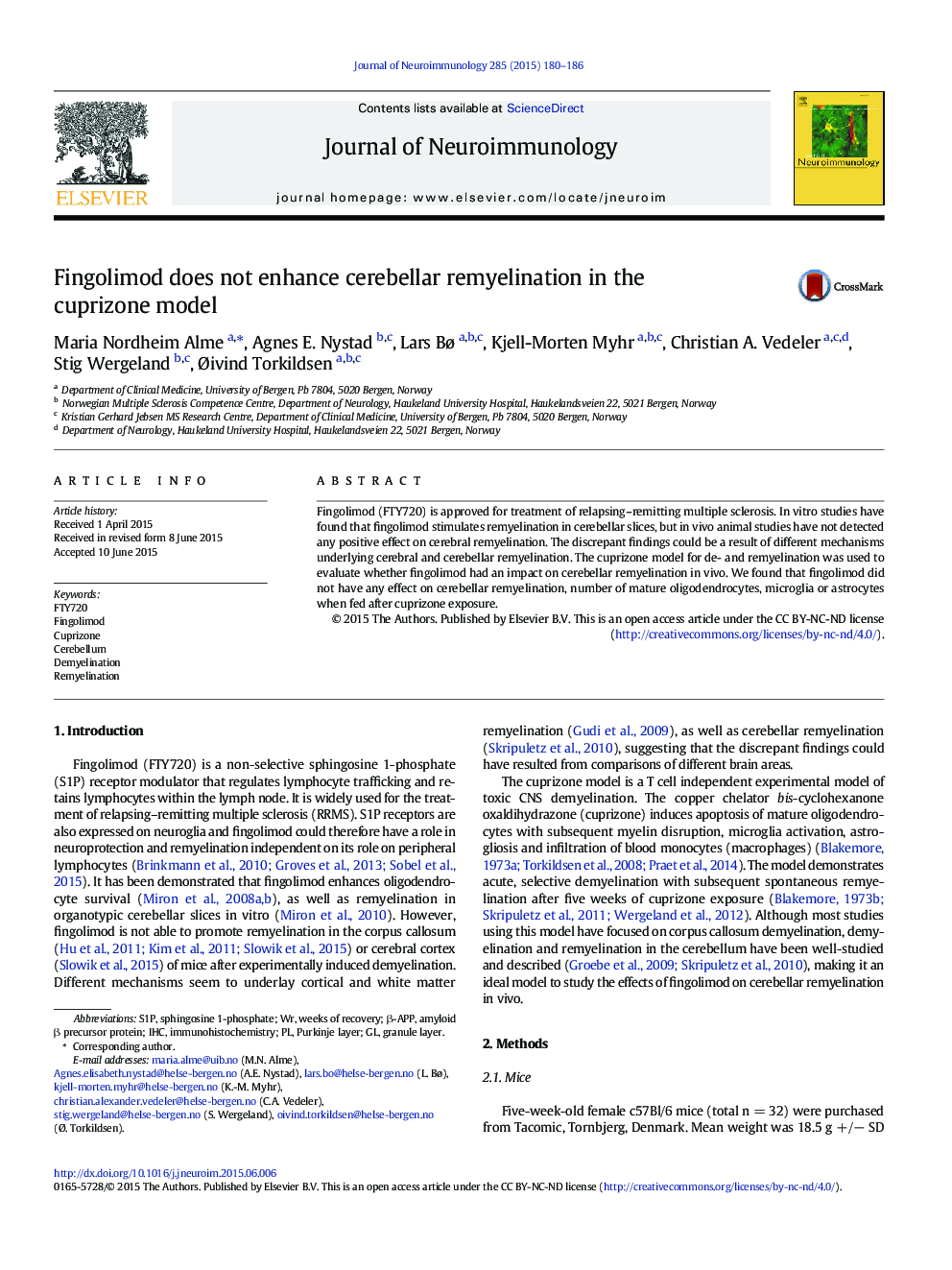| کد مقاله | کد نشریه | سال انتشار | مقاله انگلیسی | نسخه تمام متن |
|---|---|---|---|---|
| 6020189 | 1580389 | 2015 | 7 صفحه PDF | دانلود رایگان |

- Cuprixone mouse model was used to study the effect from fingolimod on cerebellar remyelination.
- Fingolimod did not promote cerebellar remyelination in mice when given after cuprizone-induced demyelination.
- Fingolimod did not have any impact on number of mature oligodendrocytes, astrocytes or microglia in cerebellum.
Fingolimod (FTY720) is approved for treatment of relapsing-remitting multiple sclerosis. In vitro studies have found that fingolimod stimulates remyelination in cerebellar slices, but in vivo animal studies have not detected any positive effect on cerebral remyelination. The discrepant findings could be a result of different mechanisms underlying cerebral and cerebellar remyelination. The cuprizone model for de- and remyelination was used to evaluate whether fingolimod had an impact on cerebellar remyelination in vivo. We found that fingolimod did not have any effect on cerebellar remyelination, number of mature oligodendrocytes, microglia or astrocytes when fed after cuprizone exposure.
Journal: Journal of Neuroimmunology - Volume 285, 15 August 2015, Pages 180-186